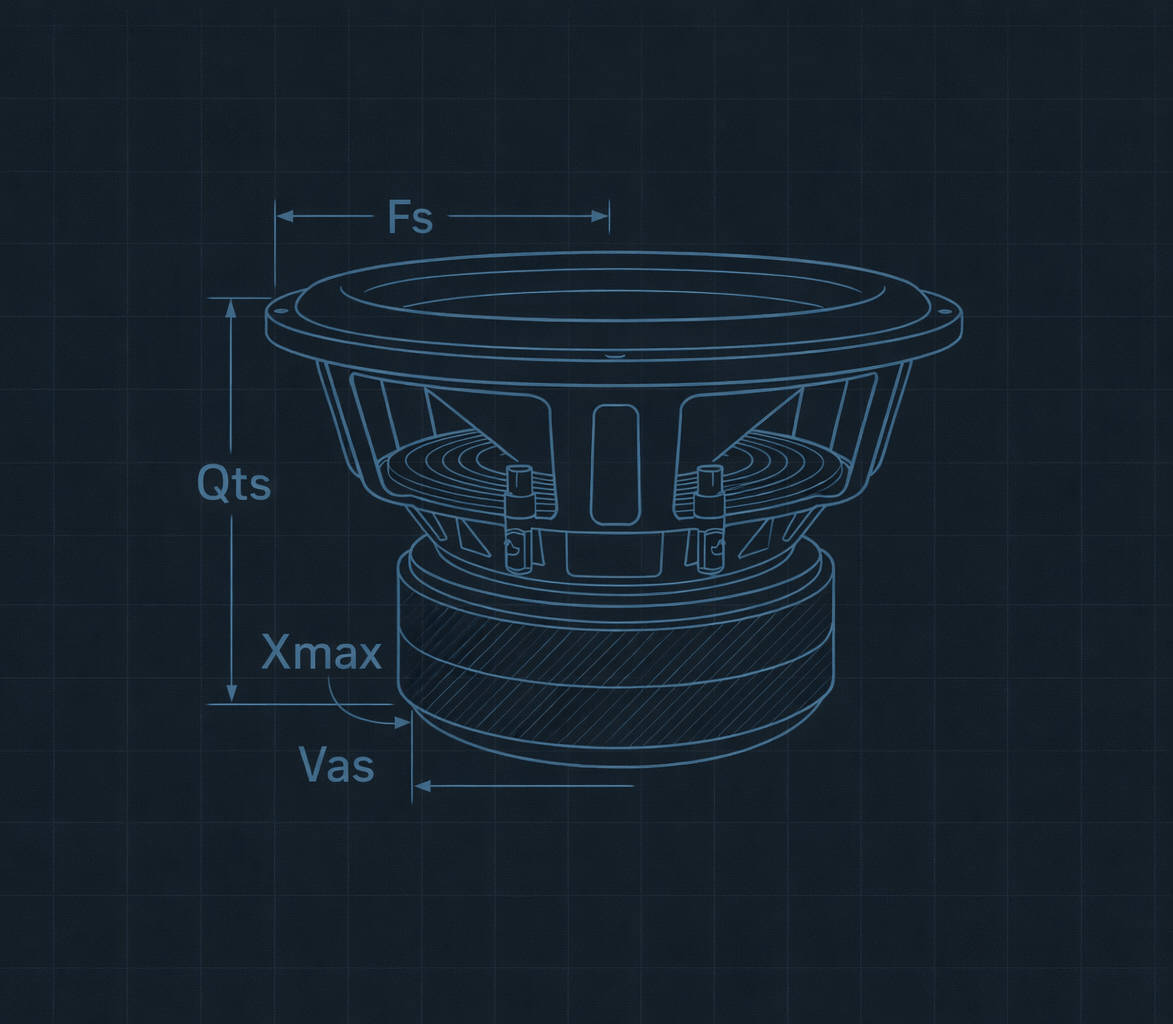When you’re shopping for a new subwoofer, the spec sheet can feel like a confusing wall of abbreviations and numbers—RMS, peak power, sensitivity, Xmax, and more. But don’t worry: once you understand what these terms mean, you’ll be able to pick the right subwoofer with confidence.
In this guide, we’ll break down the most common subwoofer specifications you’ll find on a product sheet or box. Whether you're building a custom car audio system or upgrading your existing setup, these definitions will help you make smarter choices—and maybe even sound like a pro at your local shop.
🔊 RMS Power (RMS) – Measured in Watts
What it means:
RMS stands for Root Mean Square. It tells you how much continuous power a subwoofer can handle without distortion or damage.
Why it matters:
This is the most accurate measurement of a subwoofer’s real-world performance. Always match your sub’s RMS rating to the RMS output of your amplifier.
💥 Peak Power (PEAK) – Measured in Watts
What it means:
Peak power is the maximum amount of power a subwoofer can handle in short bursts.
Why it matters:
It sounds impressive, but it’s not as useful for system design. Always prioritize RMS when choosing an amp.
🎯 Sensitivity (SENS) – Measured in Decibels (dB)
What it means:
Sensitivity tells you how loud the sub plays with 1 watt of power, from 1 meter away.
Why it matters:
Higher sensitivity = more volume using less power. This is great for efficiency in budget or low-power systems.
🔁 Frequency Response (FREQ) – Measured in Hertz (Hz)
What it means:
The frequency response range shows the lowest and highest frequencies a subwoofer can produce.
Why it matters:
Lower Hz (e.g., 25–30 Hz) means deeper bass. This spec helps you know what kind of bass your sub can deliver.
📐 Impedance (IMP) – Measured in Ohms (Ω)
What it means:
Impedance is the electrical resistance of the subwoofer’s voice coils. Common values are 2Ω or 4Ω.
Why it matters:
Impedance affects how much power your amp sends. Matching your sub and amp impedance is critical for performance and safety.
🔄 Voice Coil Type – SVC / DVC
What it means:
-
SVC = Single Voice Coil
-
DVC = Dual Voice Coil
Why it matters:
DVC subs allow more wiring flexibility, which helps optimize power delivery and system layout.
↔️ Maximum Excursion (XMAX) – Measured in Millimeters (mm)
What it means:
Xmax is how far the cone can move in one direction.
Why it matters:
The farther the cone moves, the more air it moves—and that translates into louder, deeper bass.
🧱 Mounting Depth – Measured in Inches (or mm)
What it means:
This is how deep the subwoofer sits when installed in a box or vehicle.
Why it matters:
Make sure the sub fits your enclosure or trunk space before purchasing.
🪚 Cutout Diameter – Measured in Inches (or mm)
What it means:
This is the hole size needed to mount the sub in an enclosure.
Why it matters:
A proper cutout ensures a snug, air-tight fit for the best sound performance.
📦 Recommended Enclosure Type
What it means:
Indicates whether the sub is best for sealed, ported, or bandpass boxes.
Why it matters:
-
Sealed = tight, accurate bass
-
Ported = louder, deeper bass
-
Bandpass = max SPL output
🧲 Magnet Size – Measured in Ounces or Inches
What it means:
Refers to the weight and size of the subwoofer’s magnet.
Why it matters:
Larger magnets often give better control and power handling, especially at high volumes.
🧠 Thiele/Small Parameters (T/S)
What it means:
A set of advanced technical specs (like Fs, Qts, Vas) used to design custom subwoofer enclosures.
Why it matters:
Essential for professional installers or those designing a custom box tuned for sound quality or SPL.
✅ Final Thoughts
Understanding your subwoofer’s specifications helps you choose the right gear and avoid mismatched components. Whether you want tight bass, competition-level SPL, or something in between, these specs are your roadmap to better sound.
🔗 Ready to find the right subwoofer for your build?
Explore the full American Bass Subwoofer Collection here.
Have questions? Reach out to our team—we’re here to help you build your best bass.



